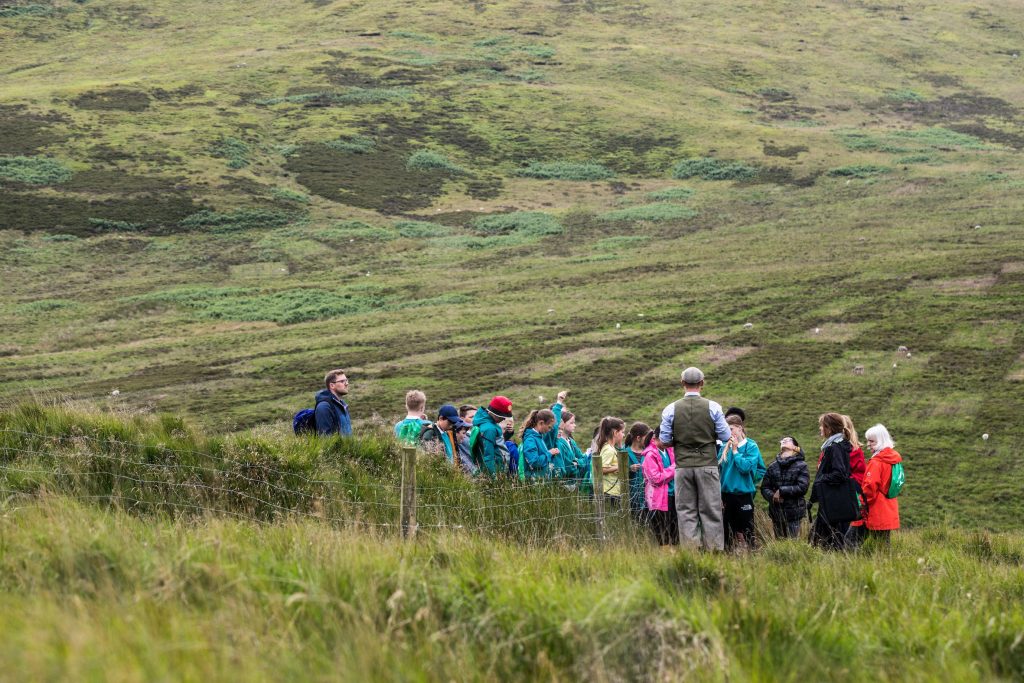Win CENS ProFlex DX5 earplugs worth £1,149 – enter here
How to use an air rifle for pigeons around the farm
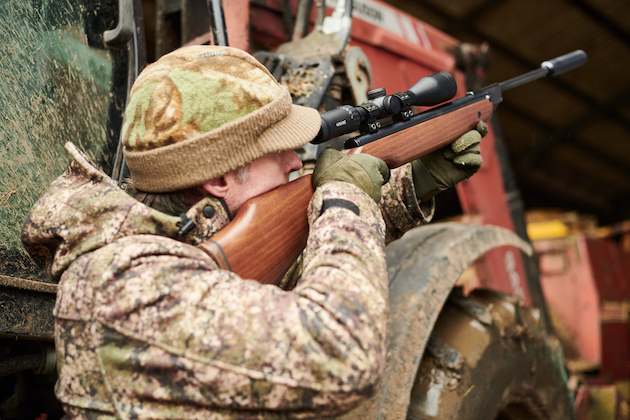 Rat and Feral Pigeon Farm Pest Control
Rat and Feral Pigeon Farm Pest Control
Using an air rifle for pigeons
It is fair to say that farmyard pest control formed a significant part of my airgunning apprenticeship and that is probably why I still have such a fondness for this type of shooting. My continuing connection with local farms is based on more than nostalgia, though, and by making bags in excess of 40 rats per night during some of my winter visits, I know that I am providing a very welcome service. (Read our list of best airgun pellets.)
Whether you’re a relative newcomer or a dyed-in-the-wool airgun veteran, one of the greatest things about bagging a farmyard permission is that it will provide you with a sheltered place to shoot when the weather turns bad. I found myself scurrying to the farmyard for that very reason when a recent planned session on the squirrels fell suddenly foul of the weather. (Read our tips on how to get an airgun permission.)
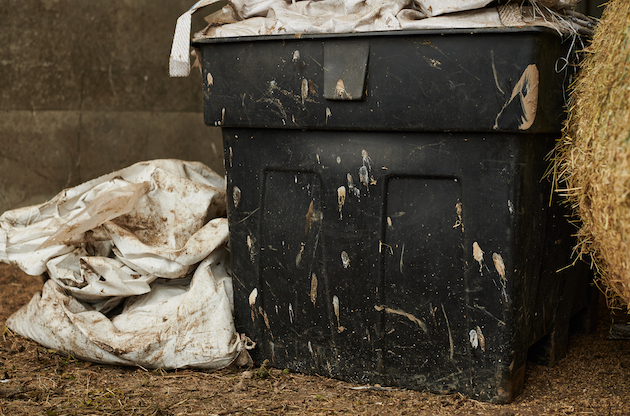
Flocks of feral pigeons and collared doves cause widespread fouling on the farm
Feral pigeons are the main target on this particular farm, though an application has been made for an individual licence to control the spiralling numbers of collared doves. The combined flocks of doves and ferals cause problems on two fronts; first by consuming significant amounts of grain and secondly, and very visibly, by fouling the grain stores, animal feed and water troughs. Despite the farmers’ best efforts to keep the birds out of the buildings, there is hardly a surface that isn’t encrusted with their accumulated droppings.
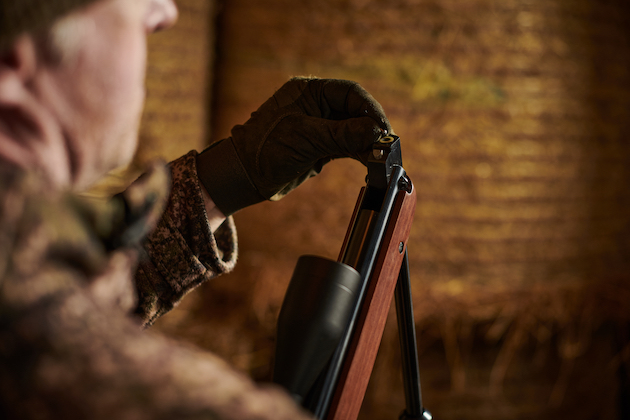
The simple break-barrel Weihrauch HW95K is well-suited to pest control
Eager to keep things simple, and perhaps for nostalgic reasons, I decided to use this air rifle for pigeons – my spring-powered Weihrauch HW95K rather than a sophisticated pre-charged airgun. Because they are used to the presence of livestock and the constant noise of farm workers and machinery, feral pigeons are not the wariest of birds, so shots tend to be taken over relatively close ranges — often within 20m — so I knew the relatively low-powered springer would be up to the task.
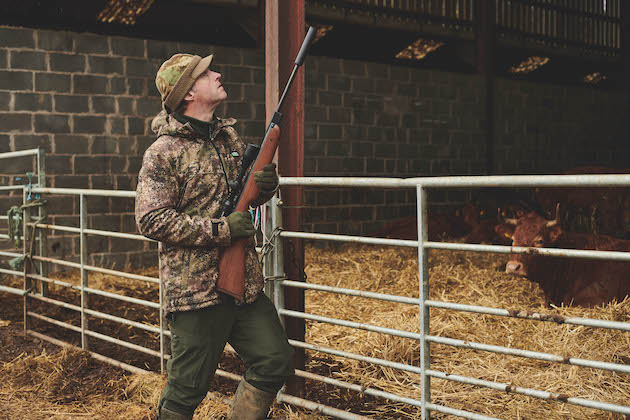
Mat looks for opportunities and checks for hazards as he scouts around the farm buildings during a dry spell
My little break-barrel Weihrauch is a .177 because I favour the faster, flatter round over a .22 when using sub-12/ft airguns, though care must be taken when using this zippy calibre around farm buildings. Thankfully, there is a lot of concrete around the farmyard and the walls serve as the perfect backstop to strip the energy from a soft lead pellet.
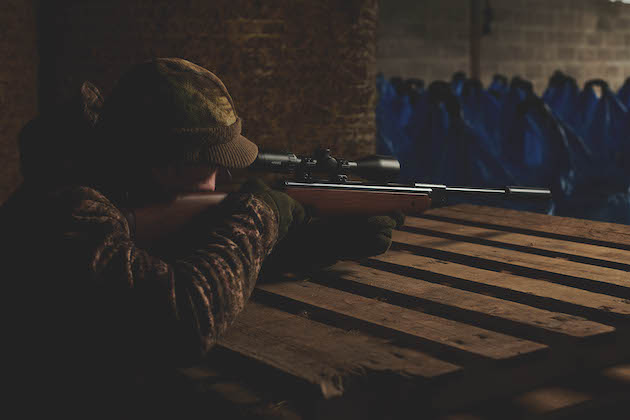
Tucked away in the shadowy barn, Mat hopes to be able to ambush incoming feral pigeons while dodging the rain
The rain let up for a while after I arrived on the farm, so I kicked off with a quick stroll around the buildings after letting the manager know I was around. It wasn’t long before I encountered a feral pigeon; a solitary bird perched up in the roof of a large barn. The bird was conveniently nestled against a thick steel joist that would ensure that my pellet would not reach the roof panel behind it. At little more than 15m it wasn’t a difficult shot and the first feral of the day was soon on the deck.
That brief dry spell lasted long enough for me to complete a circuit of the yard. I always like to have a quick recce if I can as it enables me to reacquaint myself with the lie of the land and establish the potentially most productive areas to target. I can also to identify any hazards to bear in mind before pulling the trigger.
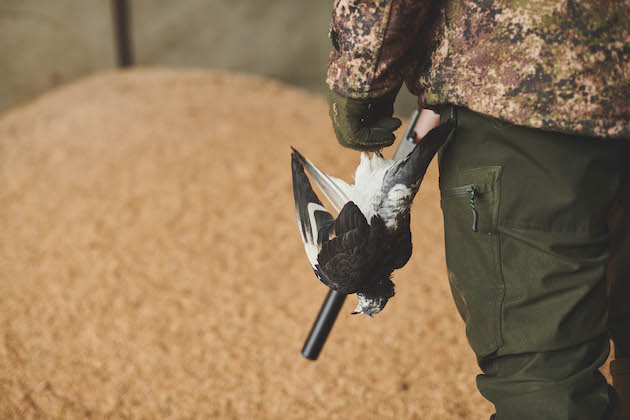
Mat retrieves a solitary grain-stealing feral pigeon after felling it from its rooftop perch
Feral drought
There were surprisingly few feral pigeons to be seen during that initial scout around but there were plenty of the usual signs of their presence. I saw a lot of evidence of ratty activity too. Last winter seemed to be a bad one for infestations of these disease-spreading rodents. I used night-vision gear to shoot several hundred rats on this particular holding through January and it looks as if I’m going to need to put in some more late shifts over the coming weeks. (Read more about shooting rats with an air rifle.)
It wasn’t long before the rain returned, forcing me to take shelter in a large barn. Tucked away in the shadows and away from the weather, I had a good view of, and safe shots towards, a large silo the feral pigeons use as a lookout before fluttering down to feed. There was also a stretch of bank where the rats had clearly been making merry.
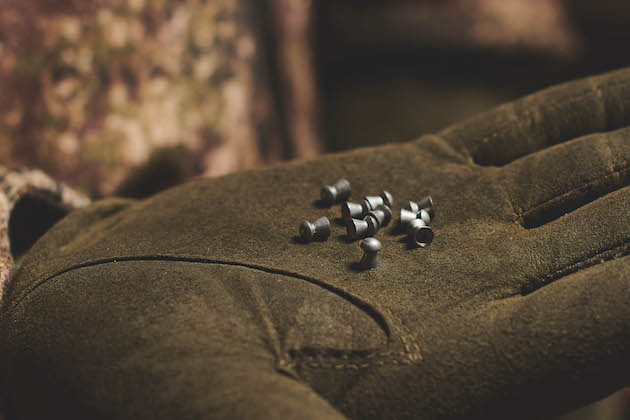
Mat prefers the faster, flatter . 177 calibre when shooting a spring-powered airgun
Hunkered down
It was no surprise that the shooting turned out to be slow. Like most birds, feral pigeons are reluctant to flight in heavy rain and I reckon that most of them must have been hunkered down on a neighbouring farm. I did manage to add one more to the tally but it wasn’t until the light began to fade that things really started to pick up. As a gloomy afternoon gradually became an even more gloomy evening, the rain became more intermittent and rats began to venture above ground. I had only half-expected to see the rodents on the move before night closed in but they were clearly growing in confidence in the failing light.
Initially, I was only catching glimpses of the occasional silvery grey flank slipping through the nettle stems but sightings steadily became more frequent, though the skulking rats were clearly reluctant to risk revealing themselves away from the cover of the undergrowth. All thoughts of accounting for any more feral pigeons had by now completely evaporated and my attention was completely focused on the ratty bank.
I was running out of light by the time a rat finally made the mistake of wandering away from the shelter of tangled stems. The extra brightness I had managed to eke out of my scope by winding it down to 4x magnification proved sufficient for me to get the crosshairs on the rodent as it lingered by a heap of rubble. My pellet caught it squarely in the head, rolling it over with scarcely a twitch.
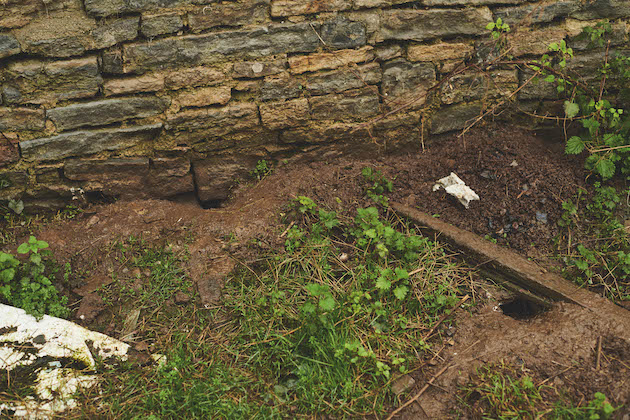
Mat may have shot a lot of rats on this farm through the winter but there are clearly still more
Straining to see in the gloom, I determined to give it another five minutes in the hope of adding another rat to the tally. Sure enough, a second opportunity quickly followed as a resourceful rodent slunk out to lap at the blood around the head of its fallen brethren. There was enough light to see this one in the sight picture and I was able to distinguish the smudge of the crosshair and deliver another clean head shot.
A clean miss at another rat a couple of minutes later was confirmation that I had run out of time and, more significantly, light. More than 30 years after my first farmyard foray, I had relished the opportunity to spend a few hours potting pests around the barns, and I will be returning very soon.
Related Articles
Get the latest news delivered direct to your door
Subscribe to Shooting Times & Country
Discover the ultimate companion for field sports enthusiasts with Shooting Times & Country Magazine, the UK’s leading weekly publication that has been at the forefront of shooting culture since 1882. Subscribers gain access to expert tips, comprehensive gear reviews, seasonal advice and a vibrant community of like-minded shooters.
Save on shop price when you subscribe with weekly issues featuring in-depth articles on gundog training, exclusive member offers and access to the digital back issue library. A Shooting Times & Country subscription is more than a magazine, don’t just read about the countryside; immerse yourself in its most authoritative and engaging publication.







